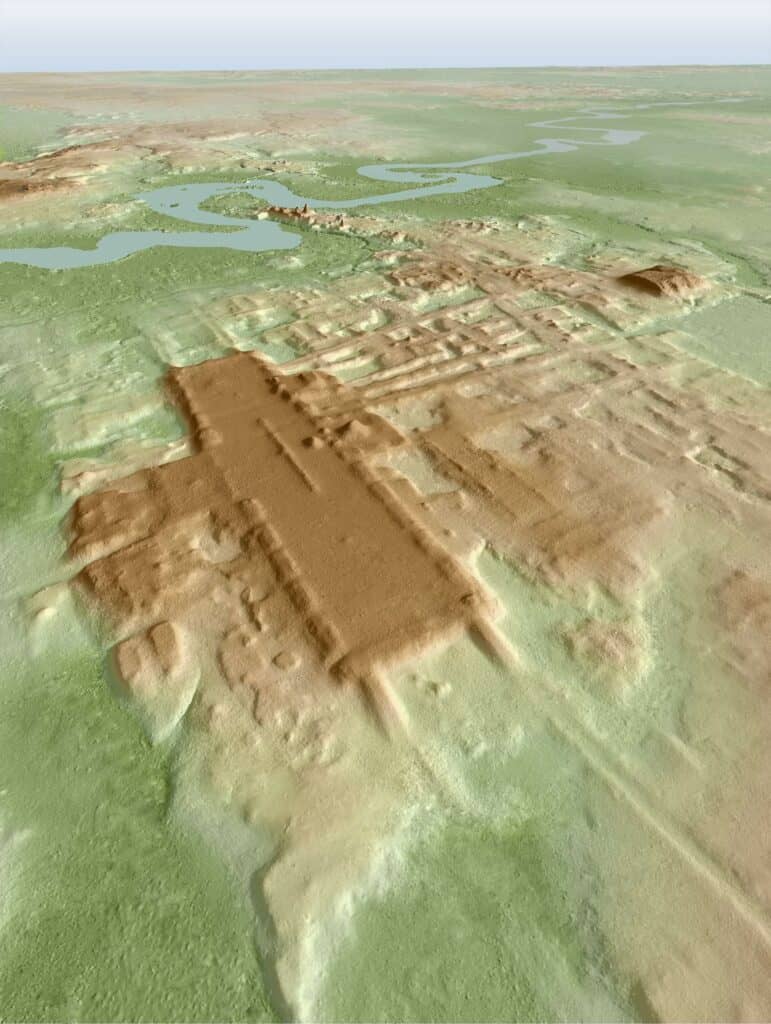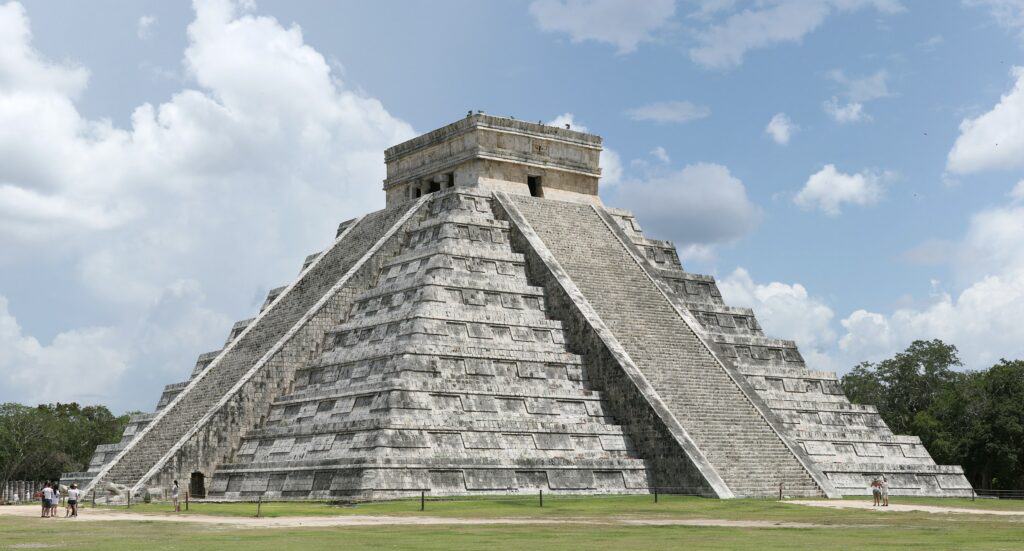Table of Contents
In common with the rest of Mesoamerica, the Maya believed in a supernatural realm inhabited by an array of powerful deities who needed to be placated with ceremonial offerings and ritual practices.
At the core of Maya religious practice was the worship of deceased ancestors, who would intercede for their living descendants in dealings with the supernatural realm.
The earliest intermediaries between humans and the supernatural were shamans.
Maya ritual included the use of hallucinogens for chilan, oracular priests. Visions for the chilan were likely facilitated by consumption of water lilies, which are hallucinogenic in high doses.
As the Maya civilization developed, the ruling elite codified the Maya world view into religious cults that justified their right to rule.
The Maya viewed the cosmos as highly structured. There were thirteen levels in the heavens and nine in the underworld, with the mortal world in between.
Each level had four cardinal directions associated with a different colour; north was white, east was red, south was yellow, and west was black. Major deities had aspects associated with these directions and colours.
Belief in supernatural forces pervaded Maya life, from the simplest day-to-day activities such as cooking, to trade, politics, and elite activities. Maya deities governed all aspects of the world, both visible and invisible.
The Maya priesthood was a closed group, they were recording increasingly complex ritual information in their hieroglyphic books, including astronomical observations, calendrical cycles, history and mythology.
On 12 July 1562, Diego de Landa had burned all the books and images of the Maya gods, which he was able to seize, at an inquisitorial court of law, an “autodafé,” in Mani, south of Merida.
The Paleo-Indian and archaic periods
The Paleoindian period in the Maya region (c. 10,000–8000 B.C.) continues to be known from just a handful of sites. Data on the Archaic period (8000–2000 B.C.) are accumulating, however, particularly in Belize, where seven new Preceramic sites have been reported (Rosenswig and Masson, 2001).

In 2020 scientists discovered the largest known ancient Maya ceremonial structure, a platform roughly 1.4 kilometers (0.87 miles) long, 400 meters (1312 feet) wide and 10 to 15 meters (49.21 feet) high. Radiocarbon dating of charcoal samples from the platform revealed it was constructed it was covered between 1000 and 800 B.C., which also makes it the oldest known ancient Maya ceremonial structure.
The rapid decline of classic Maya civilization
Which between 300 and 1000 AD occupied much of modern-day Mexico and Central America — has long puzzled archaeologists. No clear explanation has emerged for why the society, known for its sophisticated calendar system and pyramid construction, seemed to collapse between 800 and 1000 AD.
“We’re talking about a complex story, and we don’t have all the details nailed at this point,” says Kennett. He proposes that unusually high rainfall promoted a population boom between 440 and 660 AD. The stalagmite also pointed to protracted dry conditions between 660 and 1000 AD, which aligns with a period of political instability — reflected in a rapid proliferation of dated stone monuments erected by different rulers.
https://www.nature.com/articles/nature.2012.11780
Popol Vuh
In the early colonial period, an unknown nobleman from the Kʼicheʼ Maya people transcribed the Popol Vuh, using the Latin script.
The Popol Vuh tells the mythical story of how the world was created, the adventures of the Hero Twins, and the history of the Kʼicheʼ kingdom during the Postclassic period.
The deities mentioned in the Popol Vuh include Hun Hunahpu, possibly seen as the Kʼicheʼ maize god by some, and a group of gods led by the Kʼicheʼ patron Tohil. This divine trio also consists of the moon goddess Awilix and the mountain god Jacawitz.
Maya architecture and sculptures
Across five countries—Belize, El Salvador, Guatemala, Honduras, and Mexico—there are numerous Maya sites, totaling in the hundreds. Some of these sites are famous for their exceptional architecture and sculptures. In Mexico, notable sites include Chichen Itza, Palenque, Uxmal, Yaxchilan, and Tikal in Guatemala, as well as Copán in Honduras. Other significant sites, although challenging to access, include Calakmul and El Mirador.
In the Puuc region, after Uxmal, important sites include Kabah, Labna, and Sayil.
Towards the east of the Yucatán Peninsula, there are Coba and the smaller site of Tulum.
In the Río Bec area at the base of the peninsula, sites like Becan, Chicanná, Kohunlich, and Xpuhil are noteworthy.
In Chiapas, besides Palenque and Yaxchilan, sites like Bonampak and Toniná are significant.
In the Guatemalan Highlands, notable sites include Iximche, Kaminaljuyu, Mixco Viejo, and Qʼumarkaj (Utatlán).
In the northern Petén lowlands of Guatemala, several sites exist, with Tikal being the most famous.
Other Petén sites include Dos Pilas, Seibal, and Uaxactún.
In Belize, important Maya sites include Altun Ha, Caracol, and Xunantunich.

Mayas went underground
Since the declassification of the new ground-penetrating radar many years ago, the most staggering data has emerged of complex and labyrinthine underground systems in various parts of the world. At places like Guatemala in the South Americas, tunnels have been mapped under the Mayan pyramid complex at Tikal, which extends a full 800 kilometers (497.1 miles) to the opposite side of the country. Investigators remarked it was possible to understand how half a million Mayan Indians escaped the decimation of their culture.
Sources

https://books.google.pt/books?hl=en&lr=&id=NT1GDQAAQBAJ&oi=fnd&pg=PR11&dq=Sharer+and+Traxler+2006,+p.+98&ots=7Ma6Gd-aD3&sig=ME2zN6_0bsJ1hXkLWwleXzrNht8&redir_esc=y#v=onepage&q=Sharer%20and%20Traxler%202006%2C%20p.%2098&f=false
